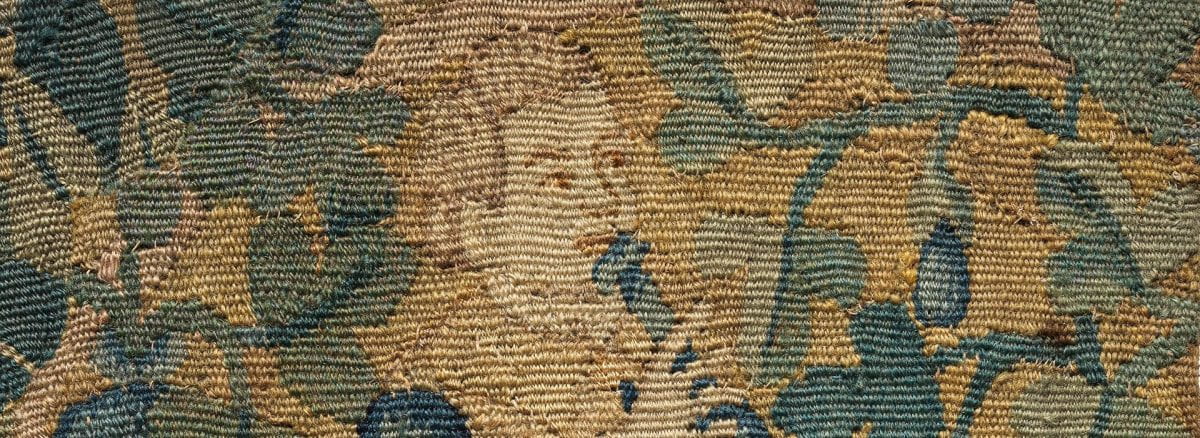Many royal, wealthy and even middle-class homes across 17th-century Europe featured large Flemish tapestries of wool, linen, silk and occasionally metallic threads. By the mid-1600s, Brussels was the center of European tapestry production and trade, bringing income and prestige to the region. This fragment likely comes from an elaborate tapestry border, a popular design element at the time.
Tapestry weavers worked from full-scale preparatory design models (cartoons) based on paintings by contemporary Flemish artists such as Peter Paul Rubens. The designs depicted rounded figures and more billowy fabrics than earlier tapestries from the 14th through 16th centuries. In this example, the charming boy sitting on a garden wall with his horn reflects the baroque style of the time.

The weave structure of this fragment includes slit, interlocking and dovetailed tapestry stitches, as well as fine threads connecting the slits to add stability for the heavy tapestry when hanging. Hachures, or short lines of yarns, produced color blends and the appearance of shading from a distance, as well as dimensionality in the image.
The quality of a tapestry depended on the caliber of the cartoon from which it was designed, the skill of the weavers, the number of warp threads per inch and the value of the materials. Here, the colors in the wool still appear quite vivid. The blue yarns were likely dyed with woad, a European plant, or possibly more costly imported indigo.

